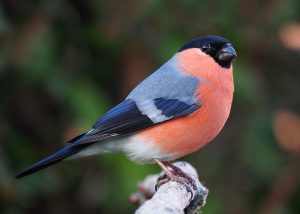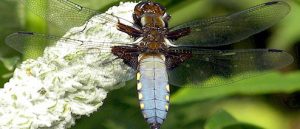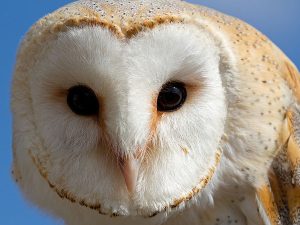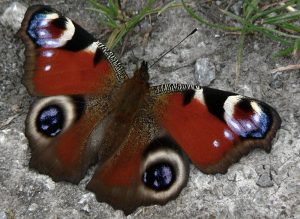As we move through April towards May, woodlands and waysides start to burst with late spring flowers. One of the most notable of these is the Bluebell which is opening its glorious blue nodding bells this month. We are famed the world over for our bluebell woods and a swathe of azure blue beneath hazel coppice or elegant beech trees is a sight absolutely not to be missed. It is our climate that produces such spectacular bluebell woods, and these areas are considered to be of international importance as Britain has about half of the world’s bluebells which are protected under the Wildlife and Countryside Act. Widespread picking of bluebells in the past, and especially the uprooting of their bulbs, has left them much diminished in the wild. In days past bluebells were known as crows’ feet, blue bonnets, cuckoo bonnets or locks and keys amongst many other local names, and the name bluebell was only adopted nationally at the beginning of the nineteenth century. In some areas they were considered to be unlucky in the house. Many wildflowers had this reputation, but in general these unlucky flowers were white in colour, making the bluebell rather an exception. You can plant native bluebells under shrubs and trees in your garden. Bulbs should be planted in September or October and should be obtained from a reputable grower of native bulbs. It is illegal to take these bulbs from the wild, so make sure your supplier can assure their provenance. Also avoid Spanish bluebells – a completely different species. Although these are quite attractive plants in their own right, they cross pollinate with our own wild species and cause the dilution of the genetic stock of our native plants. Once established bluebells will seed and spread. Some species of butterfly will take the nectar and a few other insects feed on the pollen. Bluebells are flowering earlier and in mild springs in the south a few can even be seen in February, something that is considered to be an indication of climate change.

As spring races on I really look forward to hearing a few species of warbler singing as they return to my garden and the surrounding hedges. Chiffchaff is usually the first to make his presence known and the gentle but insistent ‘chiff-chaff’ call, accompanied by the occasional ‘who-eet’ contact call is a sign that spring is in full swing. In the last couple of years willow warbler has not been heard which is a great disappointment, and this month again there has been no sign of his gentle descending song from the little copse of overgrown trees that we have in the garden. Blackcap usually arrives next and takes up a position in one of the large hawthorn trees we are fortunate to have on our boundary in the vegetable garden and if we are lucky, a garden warbler also puts in an appearance, but often seems to be just passing through. Whitethroat usually appears a little later, and as yet this year, I have not heard one. At the end of the month now, chiffchaff, garden warbler and blackcap are all singing well and we have two male chiffchaffs singing with great confidence close to the house, and even from the house roof as well as in the surrounding trees and hedge tops. I have watched a pair feeding comfortably together around our small orchard, taking invertebrates from newly opened flower buds, and diving into the thick vegetation at the back of one of our smaller ponds which is dense and undisturbed – a possible nesting site perhaps. I photographed the male as he called in the orchard and looking back at the photographs I realised that he had debris of some sort encrusted around his beak. I discovered that this is quite common amongst the smaller warblers that stop off on migration to feed on the pollen of various tree species – a very convenient source of energy. Analysis of the encrusted pollen revealed grains from pines, maples, Eucalyptus and citrus trees and has given researchers clues as to where these birds are refueling on their spring migration back to the UK.

I get a great deal of pleasure from having lots of birds nesting around my garden but with that joy comes a huge feeling of responsibility. It is not easy to be hard hearted when I see a weasel searching around the hedges looking for nests to raid, or when birds such as jays, carrion crows and magpies visit the garden. Luckily our hedges are thick and prickly with hawthorn and blackthorn, we have ‘woodcrete’ style boxes for tits as well as thick wooden ones which are generally left alone by predators. An open-fronted Robin nestbox always looks very vulnerable but is used successfully most years. The most exposed nest of all here is the spotted flycatcher’s. Not only is the box small and open fronted but is on the outside of my potting shed close to the door. It wasn’t put in that position with any great intention although I thought a confiding robin might be interested, so it was with great surprise that I noticed there were eggs in it a couple of years ago. In spite of the vulnerable position of the nest, five young were raised and fledged and we look forward to more! Elsewhere around the garden we have a variety of nest boxes. Some are used most years but not others, and there are birds that nest here that of course prefer not to use a nest box. Chaffinches, bullfinches and greenfinches nest in the thick hedges but their nests are usually only noticed in the autumn. Yellowhammers and dunnocks use the hedge bottoms and one blackbird pair has nested in the same spot in one of the hedges for several consecutive years. Wrens build their wonderful mossy nests in the twig piles and log store and we have had mistle thrushes raise a brood in one of our apple trees. Of all the birds that nest here the swallows are the most special. They use a nest cup in the front porch and sometimes raise two broods. They return to us sometime towards the end of April and if we leave doors open, will fly into the house. I’m looking forward to their return with great anticipation.

Voles are amongst my favourite small mammals (weasels and stoats also being very special) and large parts of the longer grass areas, lawns and meadows are riddled with the runs of these small creatures. They are an incredibly important food source for birds including the local owls and kestrels and the larger mammals especially foxes that we see here frequently, and they occupy a vital part in the food chain (although I don’t think about that too much!) I am a realist though, and our large populations of field voles, Bank Voles, shrews and mice in particular bring a local barn owl to our garden from time to time, and tawny owls, especially juveniles in early summer hunt in the garden regularly so I am not complaining too much. We have have had several bank voles in the greenhouse and potting shed which I would expect, a wood mouse hoarding food in the house in the downstairs cloakroom which is rather unusual, and a common shrew living happily, and apparently building a nest, in the log cabin office in the garden! We seem to currently be sharing both garden and house with rather a lot of these beautiful and important little creatures and some may need to be relocated to the garden.

One thing that always makes a special impact on me is hearing the first chiffchaff – such an evocative summery sound. We always have both willow warblers and chiffchaffs nesting around the garden so hearing the first one reminds me that spring is actually here and it is time to do a little discreet observation of our bird boxes to ascertain who is using what this year. Last year the addition of spotted flycatcher to our nesting species was a real thrill and quite unexpected, as the small open-fronted box they used was right next to the door of my little potting shed, putting the building out of bounds for some weeks. Essential tools were quickly removed and stored elsewhere. Five young were successfully fledged and I am hoping they will return – I will certainly be better prepared if they do! The majority of our boxes though have either Blue Tits or great tits, with the open fronted boxes attracting robins. The ‘sparrow terrace’ is usually occupied by tits as house sparrows are rather scarce around us, although there are plenty n the small hamlet just down the hill from me, and wrens used a ‘roosting pocket’ last year right outside the front door in the house porch. It is easy not to even notice which boxes are being used when we have so many and the birds can be very secretive, so spending a little time quietly out of sight simply watching the nest boxes is often the only way I know that they are being occupied or not at this stage. Once chicks have hatched and there is more frantic feeding activity it is easier to keep track of which are being used and by what species. One disappointment in the last couple of summers has been ‘our’ swallows who abandoned their usual spot in the porch after consistently producing two broods every summer since we have been here, but I am really hoping they return to us this year. The postman finds them slightly inconvenient, but it’s worth it!

I am sometimes surprised at the lack of knowledge many people have regarding bird song. It is easy enough it seems to tell Jessie J from Lady Gaga (which even I can do) or recognise a singer’s voice simply from tone and range, but many people find it hard to distinguish a blackbird from a song thrush or a wren from a robin. Yet it is really the same process – simply recognising musical phrases, tone, pacing and even a ‘tune’ if that is how you like to imagine or remember it. At first it can be useful to imagine a more ‘human’ interpretation – the ‘little bit of bread and no cheese’ for the Yellowhammer for instance or ‘teacher-teacher’ for a great tit, which I learnt from my parents when I was a child. But once you start to listen and possibly see the bird as it sings (sometimes easy enough for larger species such as blackbird or song thrush) you can very quickly become familiar with the songs of commoner garden species. Some, like the chiffchaff, conveniently sing their own names while others might have a characteristic descending song (willow warbler) or a very flamboyant and memorable flourish at the end (chaffinch). Others can be harder to get to grips with, especially migrants which you may only hear at specific times of year or birds in habitats that you are less familiar with. Seeing the bird as it sings is of course very helpful as sight and sound together are more memorable, but if you are struggling help is at hand via a whole range of bird song sound clips on line or even apps for your phone that can help you identify a song. This is just the time of year to brush up on your bird song identification as early May sees International Dawn Chorus Day. If there isn’t a local bird group near you, you could always go out on your own armed with a mobile phone that records sound if you have one, to listen and hopefully identify later. The RSPB has excellent clips of many of our native song birds on their website. The hardest bit, in my opinion, is getting up early!

While I am waiting for our swallows to arrive this month, my eye is always on the open porch at the front of the house which I can easily see from my office desk. It is amazing how even the tiniest amount of movement will catch the eye in a situation like this, and I am constantly noticing a flicker of activity as a blue tit or coal tit searches for insects in the shelter of this covered area. A couple of days ago I realised that although the swallows are definitely not here yet, there was quick and regular movement in and out of the porch, and leaving my work for a couple of minutes I soon realised that a Wren was building a nest in a little woven roosting pocket that I had placed there back in the autumn. A great tit often spends winter nights in the swallows’ nest here, and I thought I would give him a bit of choice. In fact if the door is opened to visitors on a winter’s evening he has been known to fly into the house! These little woven structures are designed for small birds to use for roosting at night and our great tit has certainly used it, but they are sometimes used for nesting by smaller birds and from my vantage point inside the house I was able to watch the process of construction. The nest was made entirely from moss and it seemed that the male wren took no longer than a day to complete the main structure. His visits, with his beak full, were every few minutes and he frequently stopped off on top of the hedge before speeding straight to the front door, using a rather ancient ‘bell-pull’ structure as a stopping off point, before popping straight into the roosting pocket. Male wrens usually build several nests and then advertise them to passing females with their thrilling, loud song – in this case belted out at full volume from the top of our hedge. If he attracts a mate she will select one nest and then complete it to her exacting specifications. If this particular site is chosen, and there is another nest in the hedge by the compost heaps, I expect to see a great deal more activity over the next few weeks.





